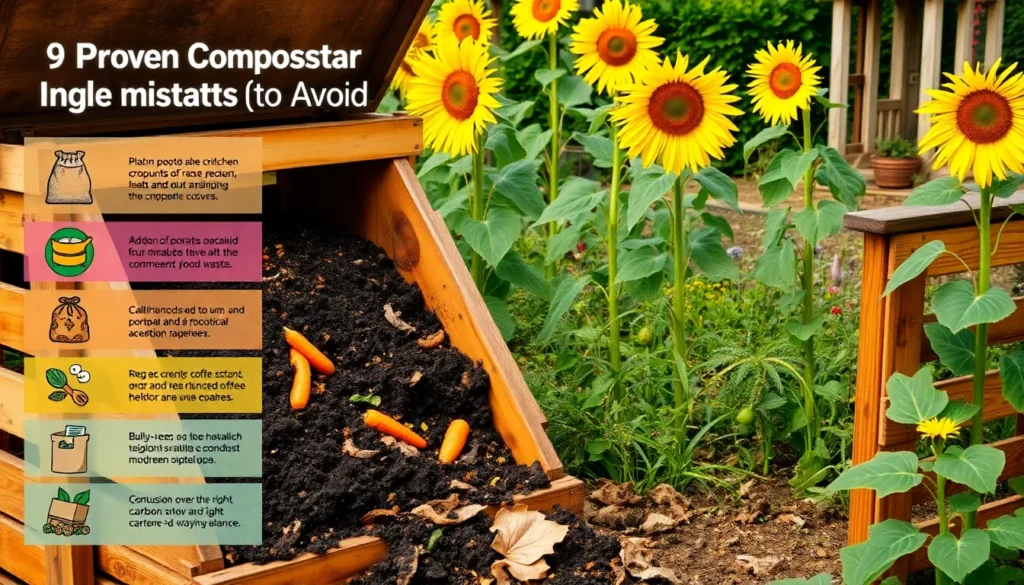Composting is one of nature’s most remarkable recycling processes, transforming kitchen scraps and garden waste into nutrient-rich soil amendments. Whether you’re just beginning your gardening journey or have been nurturing your green thumb for years, understanding the nuances of composting can significantly enhance the health of your garden. In this guide, we’ll delve into the common missteps that can hinder your composting success, equipping you with the knowledge to avoid these pitfalls and cultivate a thriving compost pile.
For both novices and seasoned gardeners, mastering the art of composting is an empowering step towards sustainable gardening. Misjudgments in composting can lead to unpleasant odors, pest issues, and inefficient breakdown of materials, turning what should be a rewarding process into a frustrating chore. By identifying and steering clear of these nine common mistakes, you’ll create a compost system that not only reduces waste but also enriches your soil, making your plants flourish like never before.
Throughout this article, we’ll explore practical tips and insights to refine your composting practices, ensuring that each step you take is both effective and rewarding. From balancing the right mix of greens and browns to maintaining optimal moisture levels, we’ll cover the essentials that can make all the difference. So, get ready to transform your composting routine and watch your garden benefit from your newfound expertise and dedication.
Incorrect Carbon-to-Nitrogen Balance
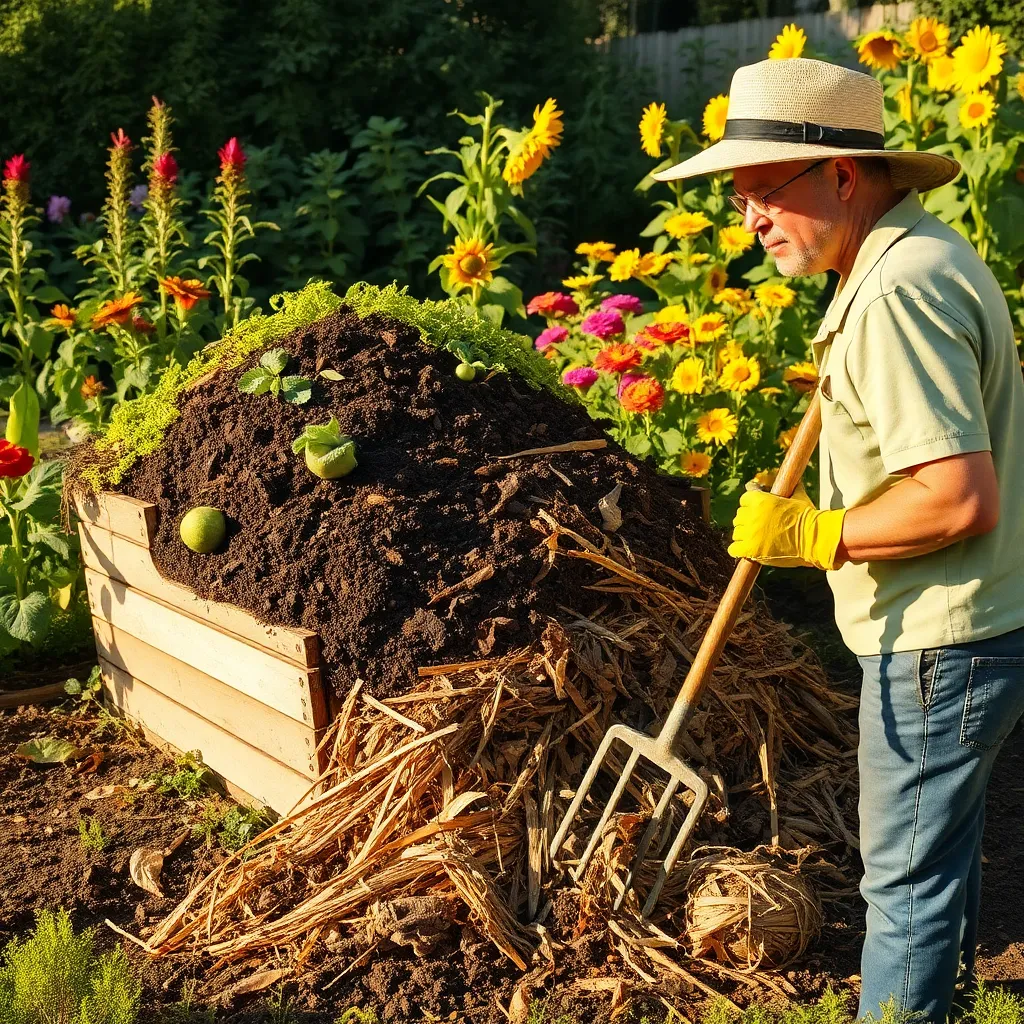
Understanding the correct carbon-to-nitrogen ratio is crucial for successful composting. An imbalance can slow down the decomposition process, leading to a compost pile that either smells bad or doesn’t break down properly.
Begin by aiming for a ratio of about 30 parts carbon to 1 part nitrogen, commonly referred to as a 30:1 C:N ratio. Carbon-rich materials include dry leaves, straw, and cardboard, while nitrogen-rich materials are typically green and moist, like grass clippings and kitchen scraps.
For beginners, a simple way to maintain this balance is to layer your ingredients. Alternate between adding a layer of brown, carbon-rich materials and a layer of green, nitrogen-rich materials in your compost pile.
Experienced gardeners might consider using a compost thermometer to monitor the pile’s internal temperature. If the temperature is too low, it may indicate a need for more nitrogen, whereas a high temperature could suggest an overabundance of nitrogen or the need for more aeration.
To troubleshoot common issues, remember that a foul smell usually means too much nitrogen, and a pile that’s not heating up might need more carbon. Adjust your inputs accordingly and turn the pile regularly to ensure proper aeration and mixing.
Overwatering the Compost Pile
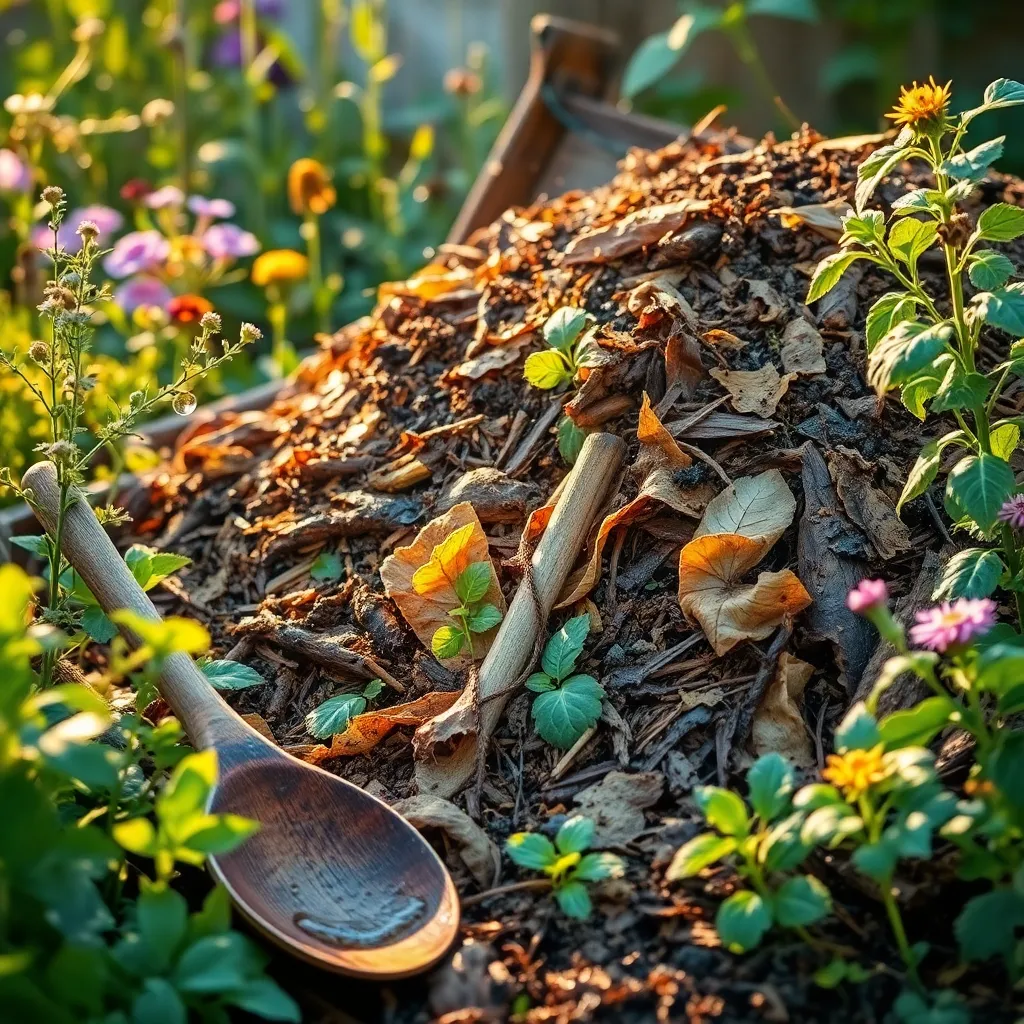
One common mistake in composting is overwatering the pile, which can lead to a host of issues. Excess moisture suffocates the aerobic bacteria responsible for breaking down organic matter, causing a foul odor and a soggy mess.
Instead of frequently dousing your compost heap, monitor the moisture level by performing a simple squeeze test. A handful of compost should feel like a damp sponge—moist but not dripping—to maintain the right environment for decomposition.
It’s beneficial to cover your compost pile during heavy rain to prevent oversaturation. A tarp or dedicated compost bin with a lid can help control moisture levels, ensuring the pile remains balanced.
For those in drier climates, adding water is sometimes necessary, but it’s important to do so sparingly. Consider incorporating materials like straw or shredded newspaper to help absorb excess water and keep the pile aerated.
Using Dairy and Meat Scraps
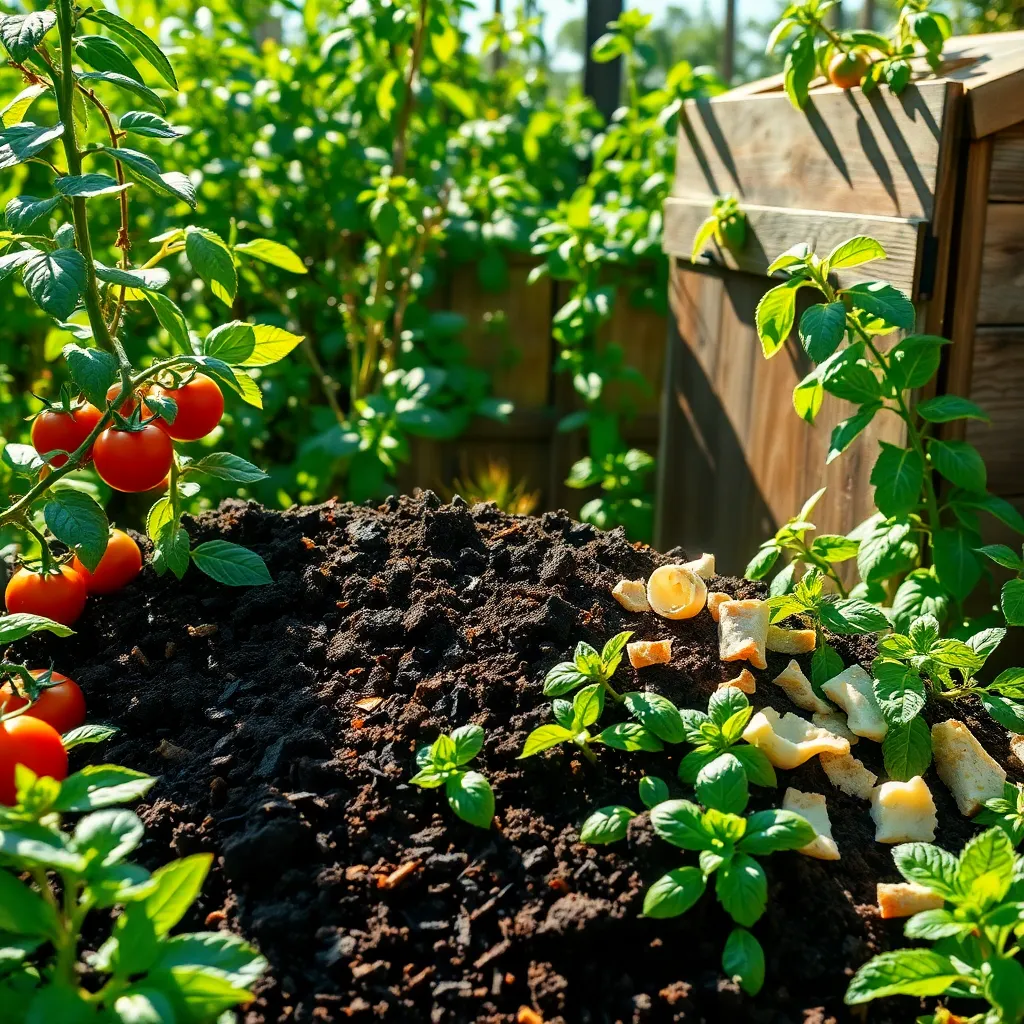
Many gardeners wonder whether they should add dairy and meat scraps to their compost piles. While these materials are organic, they can cause more harm than good if not managed correctly. Dairy products, such as milk, cheese, and yogurt, can attract pests and rodents, leading to a smelly compost pile that disrupts the composting process. Additionally, dairy decomposes slowly, potentially introducing pathogens to your compost.
Meat scraps, like bones and fish, also pose similar challenges. They can attract unwanted animals and create foul odors if improperly composted. If you decide to compost meat, it’s crucial to use a hot composting method that reaches temperatures above 140°F (60°C) to effectively break down these materials. This temperature helps kill pathogens and accelerates decomposition, but it requires diligent management of your compost pile.
Beginner gardeners might find it easier to avoid dairy and meat in their compost altogether. Instead, focus on fruit and vegetable scraps, coffee grounds, and eggshells, which break down quickly and enrich the soil without the risk of odors or pests. Advanced gardeners who are keen to compost meat and dairy should consider using a specialized composting system like a Bokashi bin, which ferments these materials without attracting pests.
Overall, while it’s possible to compost dairy and meat, it demands a higher level of commitment and maintenance. For those looking to simplify their composting efforts, sticking to plant-based scraps is a more straightforward approach. By making informed choices about what you add to your compost pile, you can create rich, healthy soil that benefits your garden without unnecessary complications.
Neglecting to Turn the Pile
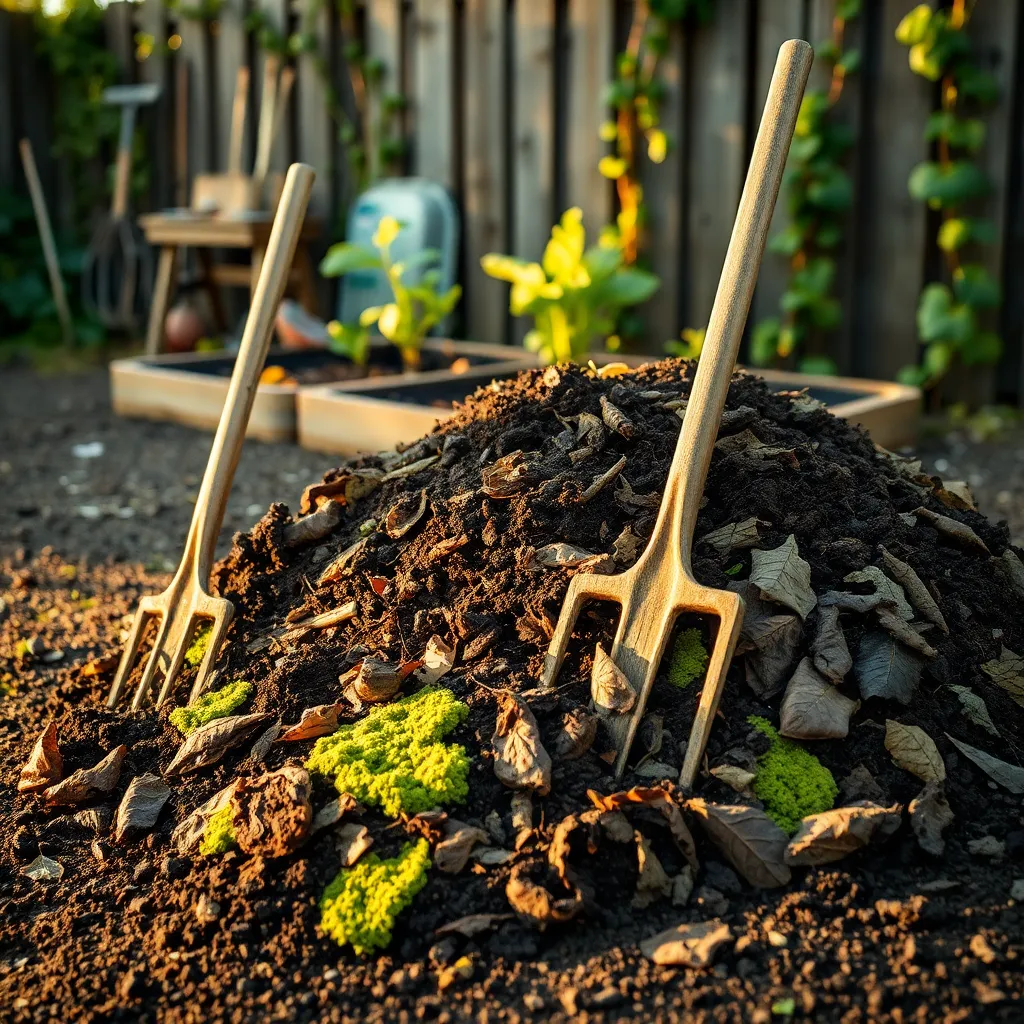
One common mistake in composting is neglecting to turn the pile, which can hinder the decomposition process. Regularly turning your compost pile ensures that oxygen reaches all parts of the heap, promoting faster microbial activity and decomposition.
To maintain an efficient compost pile, aim to turn it every one to two weeks. Use a garden fork or a dedicated compost aerator to mix the materials thoroughly, ensuring that the outer layers are brought to the center.
Turning the pile also helps to control moisture levels and prevent the compost from becoming too compacted. If the pile is too wet, turning it allows excess moisture to evaporate, while if it’s too dry, it helps distribute moisture more evenly.
For those looking to speed up the composting process, consider adding materials like straw or shredded cardboard when turning the pile. These materials increase aeration and provide carbon, balancing the nitrogen-rich kitchen scraps and green waste.
Adding Diseased Plant Material
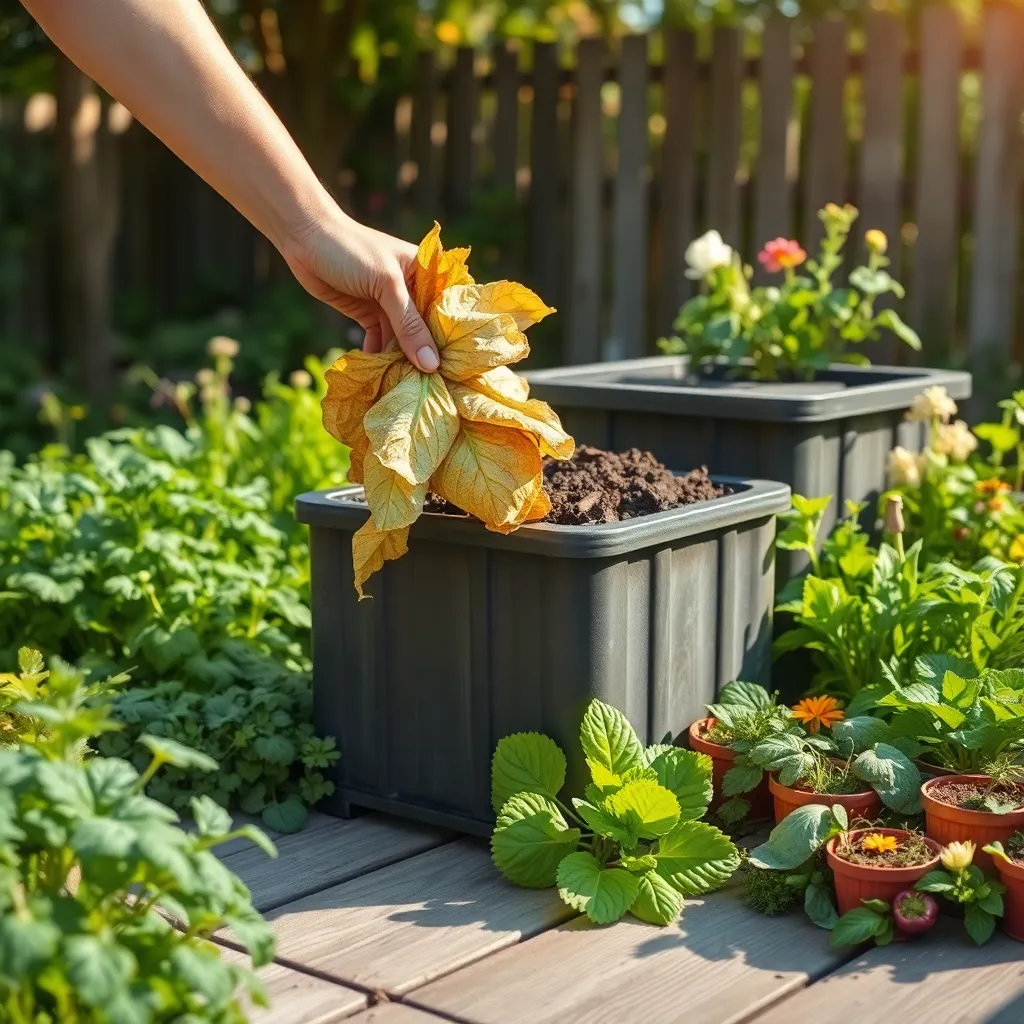
When it comes to composting, adding diseased plant material can be a costly mistake. Introducing pathogens into your compost pile can lead to the spread of disease when the compost is used in your garden.
Instead, focus on maintaining a healthy compost environment by excluding any suspicious plant material. It’s crucial to remove any leaves or stems that show signs of disease, such as discoloration, spots, or wilting, before adding them to your pile.
For those who are more experienced, consider using a hot composting method to manage any potential pathogens. By ensuring your compost pile reaches temperatures between 135°F and 160°F, you can effectively kill most pathogens, making the compost safe to use.
Additionally, always monitor the health of your garden plants to catch and remove diseased material early. This proactive approach helps prevent diseases from spreading and ensures that only healthy plant material is added to your compost.
Ignoring Temperature Control
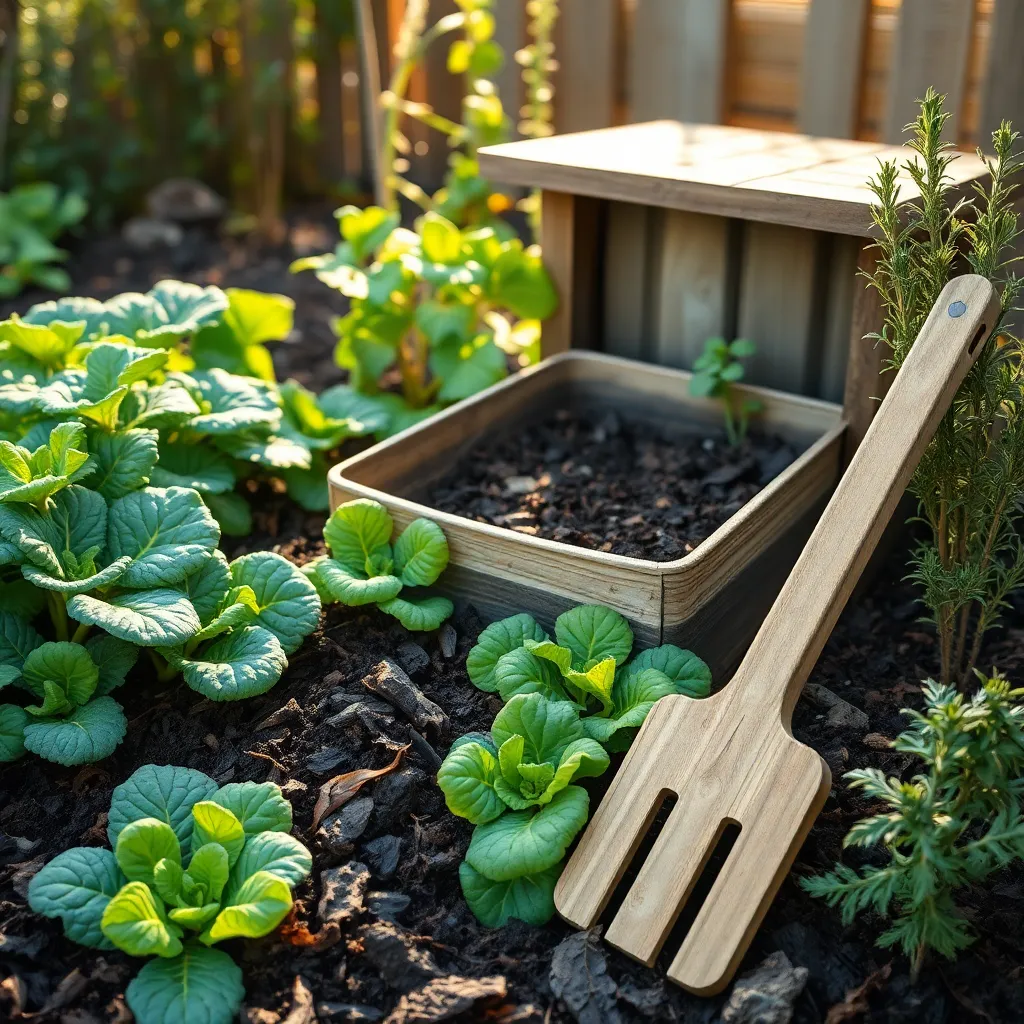
Temperature control in composting is a critical element that many gardeners overlook. Ignoring the temperature inside your compost heap can lead to slow decomposition and unwanted pests.
To maintain an active compost pile, aim for temperatures between 135°F and 160°F. This range ensures that most weed seeds and pathogens are destroyed, leaving you with a healthy compost.
Monitoring your compost’s temperature can be done easily with a compost thermometer, which is an inexpensive tool that provides valuable data. When temperatures drop below 100°F, it’s usually a sign that you need to turn the pile to introduce more oxygen and revitalize the process.
For beginners, turning the pile every week or two can help maintain optimal temperatures. More experienced gardeners might experiment with adjusting the carbon-to-nitrogen ratio by adding more green materials, like grass clippings, to boost microbial activity and heat production.
Composting with Non-Biodegradable Items
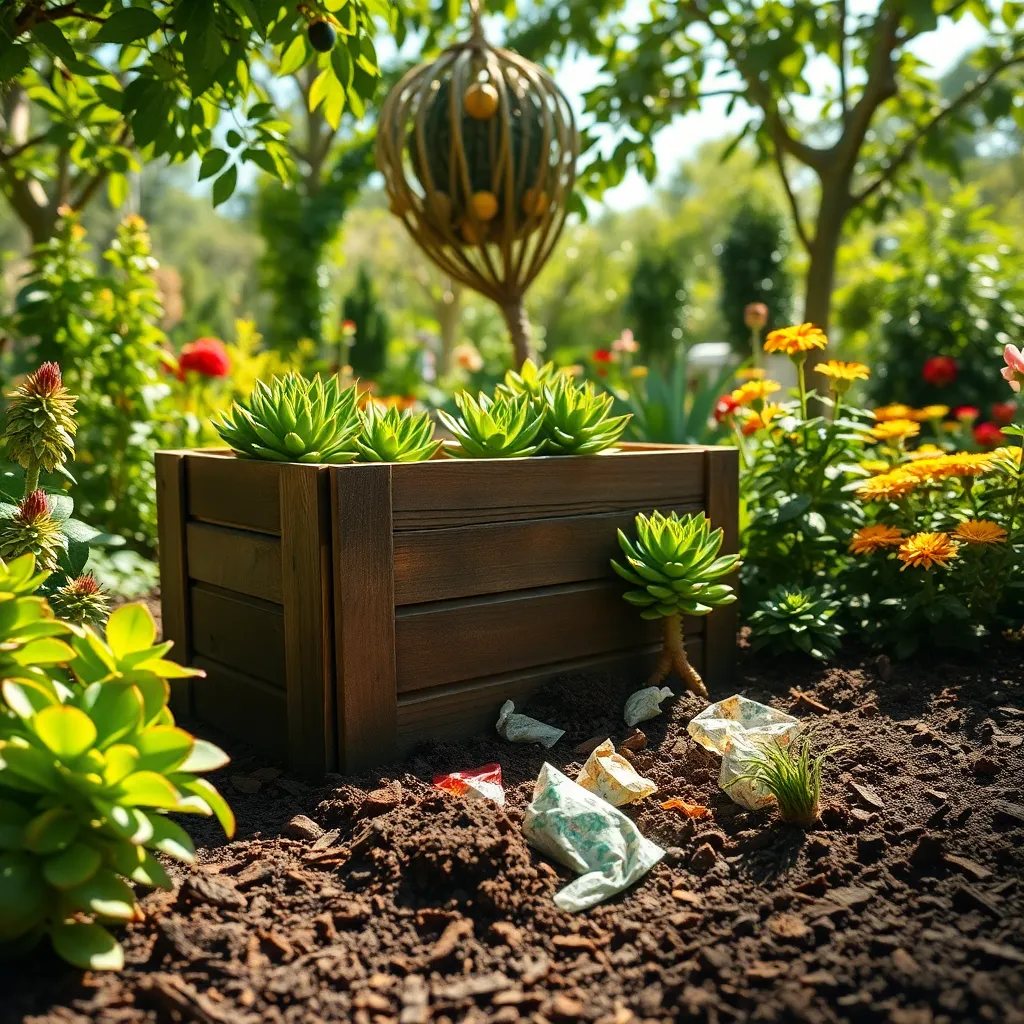
Composting is a fantastic way to recycle organic material, but including non-biodegradable items can disrupt the process. Items such as plastic, glass, and metal should never find their way into your compost pile, as they do not break down and can contaminate your compost.
It is important to understand that even small bits of plastic can persist in the soil for hundreds of years, potentially releasing toxins. To ensure a healthy compost, carefully sort your waste and exclude anything that is not organic or biodegradable.
For beginners, a simple guideline is to focus on fruit and vegetable scraps, coffee grounds, and eggshells as these break down easily. Paper products can also be composted, but make sure they are not coated with plastic or other non-compostable materials.
Experienced gardeners might consider adding small amounts of natural fibers like cotton or wool to their compost, ensuring they are free of synthetic blends. When in doubt, consult with local gardening resources or extension services to better understand what items are suitable for composting in your specific environment.
Inadequate Oxygen Circulation
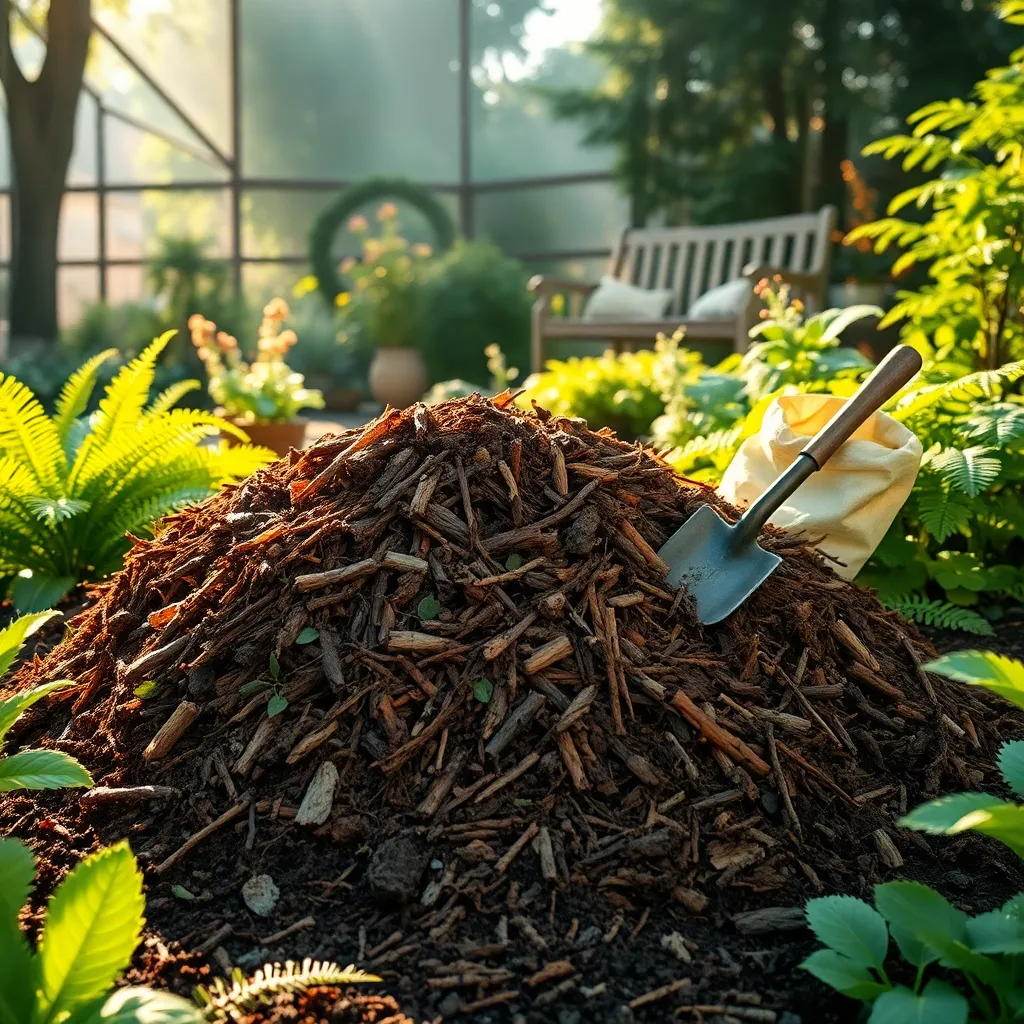
Ensuring adequate oxygen circulation is crucial for a thriving compost pile. When air can’t flow freely, the composting process slows, and unpleasant odors may develop. Turning your pile regularly is the simplest way to maintain good air circulation. Use a garden fork or compost aerator to turn the pile every one to two weeks, mixing outer materials inward.
Another effective method is to create a well-balanced mix of materials. Use equal parts green (nitrogen-rich) and brown (carbon-rich) materials to create a loose, airy structure. This balance not only supports oxygen flow but also promotes efficient decomposition.
For those in wetter climates, consider using a covered compost bin. This can help manage excess moisture, which often leads to compacted materials and reduced airflow. A lid or tarp will keep rain out while still allowing you to control oxygen levels by turning the pile.
Advanced gardeners might consider installing a perforated PVC pipe through the center of the pile. This technique can dramatically enhance aeration by providing a direct channel for air to circulate. Remember, a well-aerated compost pile not only decomposes faster but also produces a richer end product for your garden beds.
Starting with Too Little Material
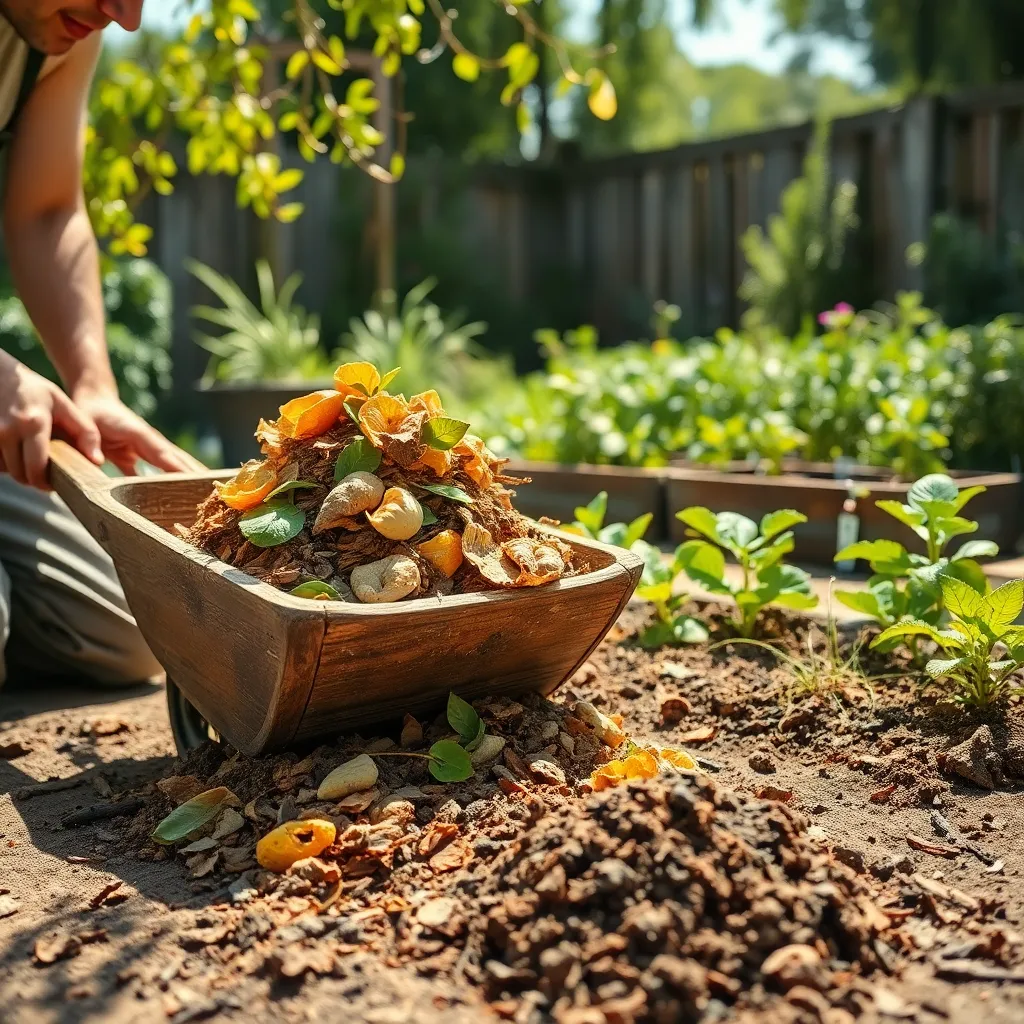
Starting a compost pile with too little material is a common mistake that can hinder the decomposition process. When there’s not enough organic matter, the pile won’t generate the necessary heat to break down materials efficiently, leading to slower composting.
To kickstart effective composting, aim for a pile size of at least 3 feet by 3 feet by 3 feet, which helps retain heat and moisture. For those with limited space, consider using a compost tumbler that allows for optimal aeration even with smaller amounts of material.
It’s crucial to include a mix of green and brown materials in your compost to balance nitrogen and carbon levels. Green materials like grass clippings and kitchen scraps provide nitrogen, while brown materials such as dry leaves and cardboard supply carbon—both essential for microbial activity.
Layering these materials can enhance the composting process, ensuring that each layer is about 2 to 4 inches thick. This practice not only aids in maintaining the right balance but also promotes better airflow within the pile.
For advanced gardeners, adding a small amount of finished compost or garden soil can introduce beneficial microbes to accelerate decomposition. Regularly turning the pile with a garden fork every two to three weeks will further encourage uniform breakdown and prevent unpleasant odors.
Conclusion: Growing Success with These Plants
In navigating the intricate landscape of relationships, avoiding common pitfalls can lead to flourishing connections. Here, we delved into nine key relationship mistakes: neglecting active listening, letting communication falter, allowing assumptions to breed misunderstandings, failing to express appreciation, resisting vulnerability, harboring unrealistic expectations, dismissing self-care, overlooking the importance of shared goals, and letting external pressures dictate the relationship’s course.
As your immediate next step, choose one area to focus on this week—perhaps dedicating time to actively listen or express gratitude more frequently. Implementing small, consistent changes can transform your relationship dynamic.
For enduring relationship success, remember to revisit and reflect on these insights regularly. Save or bookmark this article as your go-to guide for maintaining a nurturing and resilient partnership. By keeping these principles close, you empower yourself to cultivate a love that not only endures but thrives.
With these strategies in hand, the future of your relationships is brimming with potential. Embrace this opportunity to grow together, fostering a bond that stands the test of time.

